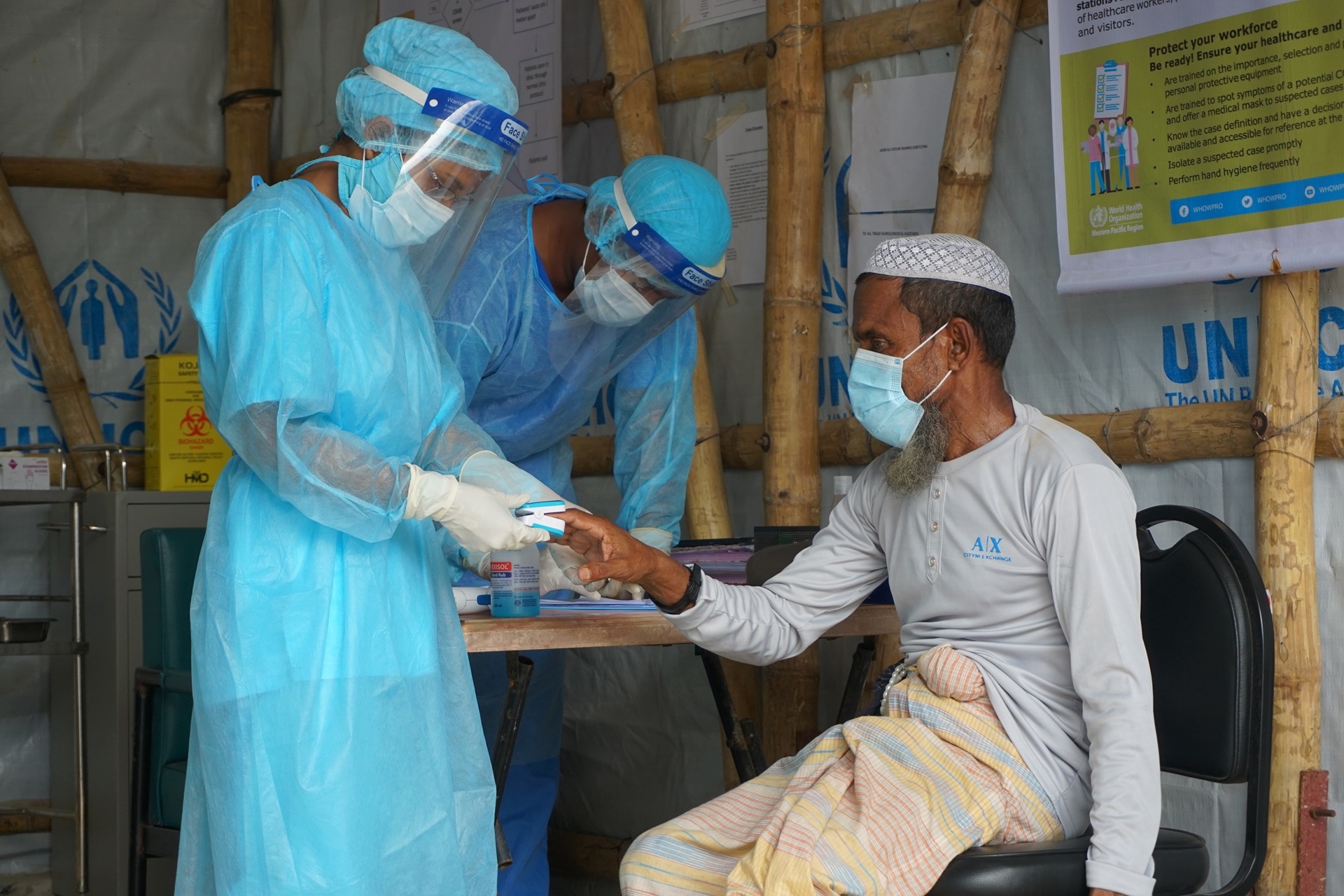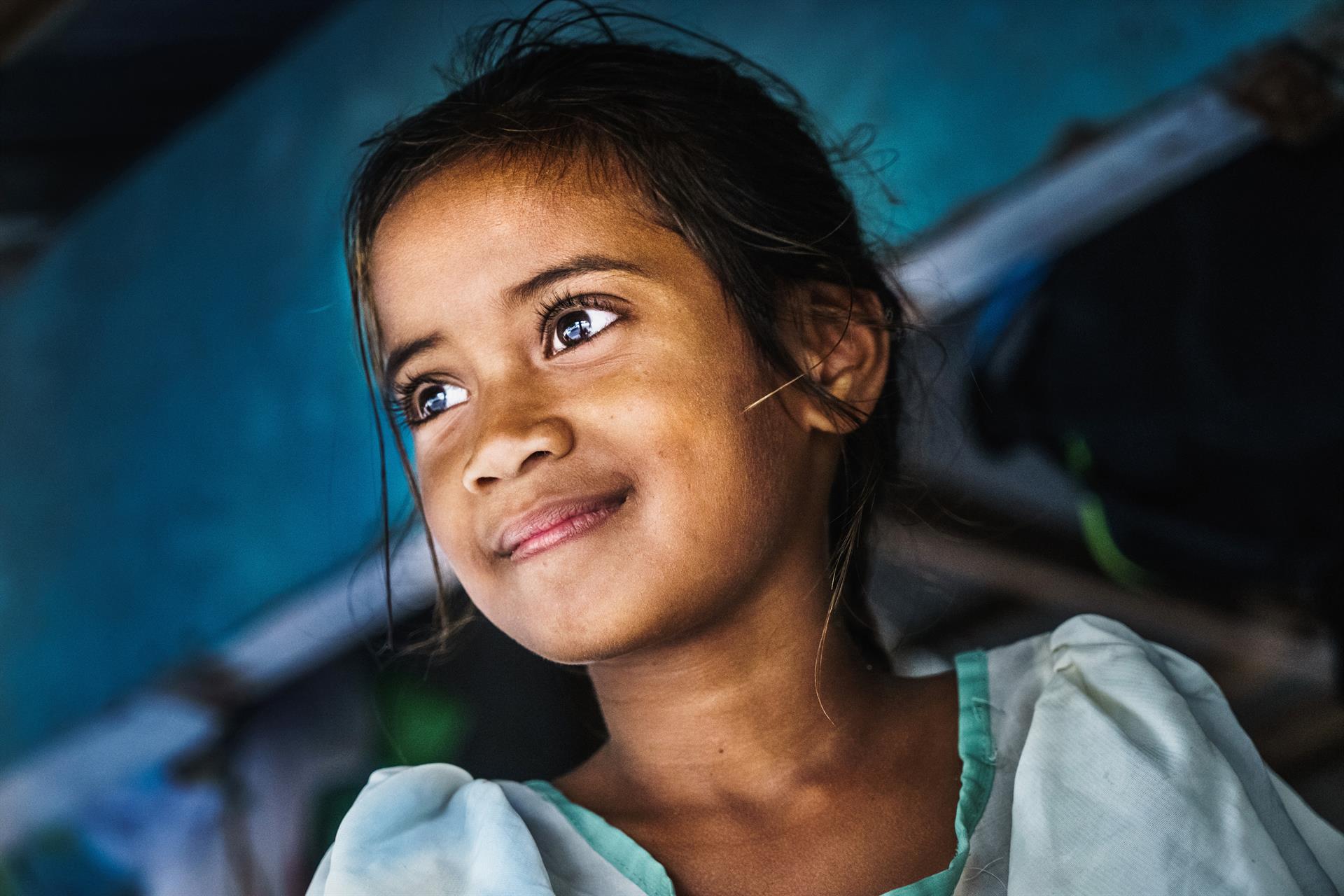
The impact of COVID-19 on global health goals
20 May 2021 | Spotlight
COVID-19 responsible for at least 3 million excess deaths in 2020
As of 31 December 2020, COVID-19 had infected over 82 million people and killed more than 1.8 million worldwide. But preliminary estimates suggest the total number of global “excess deaths” directly and indirectly attributable to COVID-19 in 2020 amount to at least 3 million, 1.2 million higher than the official figures reported by countries to WHO.
With the latest COVID-19 deaths reported to WHO now exceeding 3.3 million, based on the estimates produced for 2020, we are likely facing a significant undercount of total deaths directly and indirectly attributed to COVID-19.

The term “excess deaths” describes deaths beyond what would have been expected under “normal” conditions. It captures not only confirmed deaths, but also COVID-19 deaths that were not correctly diagnosed and reported as well as deaths attributable to the overall crisis conditions. This provides a more comprehensive and accurate measure when compared with confirmed COVID-19 deaths alone.
For example, some countries only report COVID-19 deaths occurring in hospitals or the deaths of people who have tested positive for COVID-19. In addition, many countries cannot accurately measure or report cause of death due to inadequate or under-resourced health information systems.
The pandemic has likely increased deaths from other causes due to disruption to health service delivery and routine immunizations, fewer people seeking care, and shortages of funding for non-COVID-19 services. The second WHO “pulse survey” of 135 countries in March 2021 highlighted persistent disruptions at a considerable scale over one year into the pandemic, with 90% of countries reporting one or more disruptions to essential health services.
The COVID-19 pandemic has shown the importance of data and science to build back more resilient health systems and equitably accelerate towards our shared global goals.
“All countries must have the necessary capacity and resources to accurately collect and use health data even in the midst of an ongoing crisis”, says Dr Tedros Adhanom Ghebreyesus, Director-General of the World Health Organization. “The COVID-19 pandemic has shown the importance of data and science to build back more resilient health systems and equitably accelerate towards our shared global goals.”

COVID-19 disproportionately impacts vulnerable populations
COVID-19 has exposed persistent inequalities by income, age, race, sex and geographic location. Despite recent global health gains, across the world people continue to face complex, interconnected threats to their health and well-being rooted in social, economic, political and environmental determinants of health.
The pandemic has also revealed significant gaps in country health information systems. While high-resource settings have faced challenges related to overstretched capacity and fragmentation, weaker health systems risk jeopardizing hard-won health and development gains made in recent decades.
Data from the COVID-19 World Symptoms survey shows a decline in preventive behaviours such as physical distancing, mask wearing and hand washing as household overcrowding increases. Among people living in uncrowded households, 79% reported trying to physically distance themselves compared with 71% in moderately overcrowded and 65% in extremely overcrowded households. Similar trends were observed for hand washing and mask-wearing, underscoring vulnerabilities due to socioeconomic status.
.tmb-1366v.png?Culture=en&sfvrsn=e2fff1d2_1)
Source: WHO calculations using COVID-19 World Symptoms Survey data led by Facebook and the University of Maryland for 35 high-income countries, May 2020 – February 2021.
Irrespective of the pandemic, inequalities and data gaps impede targeted interventions. For example, a recent WHO global assessment of health information systems capacity found that only half of countries include disaggregated data in their published national health statistical reports. Investing in strong health information systems is vital to ensure disaggregated data reaches decision-makers and achieve equitable health outcomes.
With stronger, more equitable health information systems we can more accurately measure progress towards the health-related Sustainable Development Goals and WHO’s Triple Billion targets. “We are now less than nine years away from 2030”, says Dr Samira Asma, Assistant Director-General for the Division of Data, Analytics and Delivery for Impact at WHO. “We know where the gaps are, and we have the solutions to address them. What we need now is commitment and investment to accelerate progress and reach our goals.”

Before COVID-19 the world was making progress towards global health goals - but not fast enough
The World Health Statistics 2021 report presents the most up-to-date data and trends on more than 50 health-related indicators for the Sustainable Development Goal and WHO’s Triple Billion targets.
The data shows that global life expectancy at birth has increased from 66.8 years in 2000 to 73.3 years in 2019, and healthy life expectancy has increased from 58.3 years to 63.7 years. But even before the pandemic struck, progress was too slow and uneven to meet many targets including reduced premature mortality from noncommunicable diseases, tuberculosis and malaria incidence, and new HIV infections.

“Although we are living extended lives and more years in good health, these are no grounds for complacency”, says Dr Bochen Cao, Technical Officer in the Division of Data, Analytics and Delivery for Impact at WHO. “Many of the underlying health determinants still need critical improvements, and COVID-19 is yet another wake-up call to remind us that our health remains at risk unless urgent actions are taken to close the gaps.”
For instance, while global tobacco use has decreased by 33% since 2000 the prevalence of adult obesity is increasing, and in 2016 up to a quarter of the populations in high-income countries were obese. And although the prevalence of hypertension declined worldwide between 2000 and 2015, it is increasing slightly in low-income countries.
Children and women in low and lower-middle-income countries are also at higher risk of malnutrition including stunting, wasting, and anaemia during pregnancy, while people in upper-middle-income countries are more susceptible to being overweight.
Before COVID-19, many countries were making progress towards universal health coverage. Improvements in the coverage of essential health services were recorded in all income groups and across different types of services, despite persistent inequalities. But financial protection has been deteriorating. As of the latest figures, the proportion of the population spending more than 10% of their household budget on healthcare rose from 9% to 13% between 2000 and 2015, and almost 3% were spending more than 25% of their budget on health care.

Health emergencies protection also requires urgent reform. Despite an increased focus on global health security, COVID-19 has revealed a critical need for a well-coordinated, multisectoral health emergency surge capacity and preparedness at all levels and within all countries. Continuing efforts are needed to improve and maintain early warning systems to mitigate and manage public health risks within the national context and to consider the worldwide pandemic contexts for national health emergency and operational preparedness planning.

World Health Data Hub to improve access to data
In addition to underscoring inequalities and data gaps, COVID-19 has highlighted the need for universal access to global health data. WHO’s new World Health Data Hub will provide an interactive digital platform and trusted source for all global health data, fulfilling WHO’s commitment to provide health data as a public good.
The Hub will provide easy access to powerful visualization tools that reveal trends, patterns and connections and draw insights. It will also allow Member States to upload and review their data in a secure environment, will be scalable to allow different varieties, volumes and velocities of data and will provide access to the latest predictive analytics technologies.
The Hub brings together all of WHO’s data assets including the Global Health Observatory, the GPW 13 Triple Billion dashboard, the health equity monitor, and the WHO Mortality Database.


Leveraging partnerships to get back on track
The World Health Data Hub is made possible through partnerships that combine digital technology and innovative solutions with the global convening capabilities of an organization like WHO. As key technology partners, Microsoft and Avanade are supporting WHO to deliver this ambitious end-to-end solution with a shared commitment to promote health data as a public good.
“This partnership was started to address a common goal not only to respond to the pandemic but to ensure that every person, every citizen and every country has a chance for a healthier life”, says Dr Samira Asma. “We have to be accountable for results, but that accountability can’t come if we don’t have underlying data systems and robust partnerships.”
Public-private partnerships like this one maximize the combined leadership, expertise, resources and reach of each organization to rapidly scale solutions and deliver measurable impact.
“It is our greatest ambition with the World Health Data Hub that we are more effective as a global community in making a difference in people’s lives because we have come together, building on our respective expertise, to bring to life that unified view that we've never had before,” says Justin Spelhaug, Vice President of Tech for Social Impact at Microsoft.
“At Avanade, our purpose is to make a genuine human impact,” adds Pam Maynard, CEO at Avanade. “The work our Tech for Social Good teams are doing to create scalable, repeatable and affordable solutions for the social sector is one way we bring that purpose to life every day.”
COVID-19 has underscored the need for efficient, multilateral cooperation that is responsive to country needs and reflects their unique priorities. WHO is committed to collaborating with all partners to support countries and get back on track towards the SDGs and Triple Billion targets. “There's no one organization, one nation or one group that's going to solve COVID-19”, says Spelhaug. “It requires full mobilization of the public and private sector at new levels of scale to empower countries, policymakers, and responders.”
“It’s been incredibly rewarding to see how the power of data and analytics can transform organizations, like the WHO, to accelerate from insights to action, allowing them to spend more time focusing on what matters most: improving the lives of people and communities around the world,” says Maynard.
With less than nine years to 2030, we have no time to lose.
